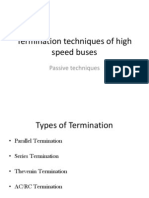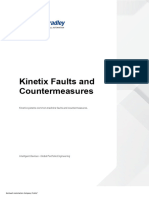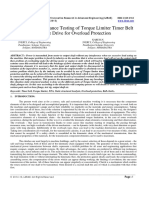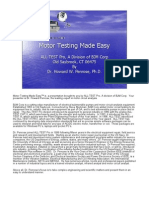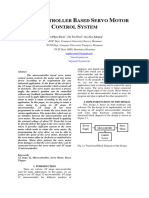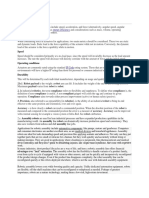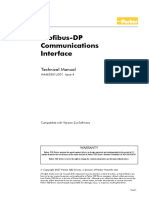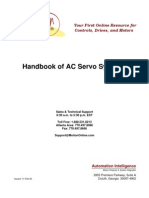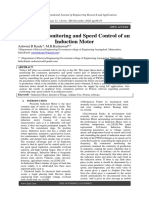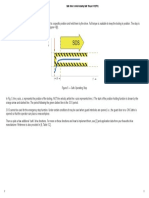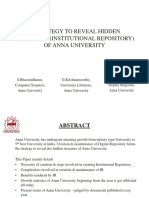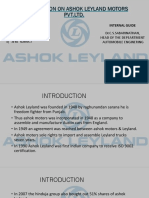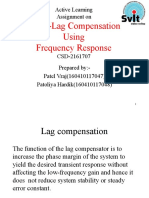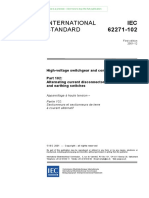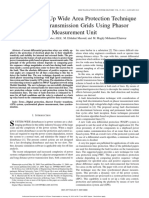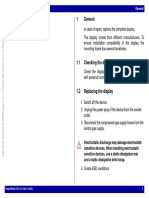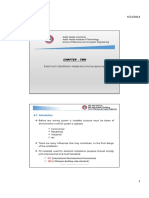Safe Drive Control Including STO: I Have Discussed Stop Categories Before Emergency Stop - What's So Confusing About That
Safe Drive Control Including STO: I Have Discussed Stop Categories Before Emergency Stop - What's So Confusing About That
Uploaded by
Vi JäìCopyright:
Available Formats
Safe Drive Control Including STO: I Have Discussed Stop Categories Before Emergency Stop - What's So Confusing About That
Safe Drive Control Including STO: I Have Discussed Stop Categories Before Emergency Stop - What's So Confusing About That
Uploaded by
Vi JäìOriginal Title
Copyright
Available Formats
Share this document
Did you find this document useful?
Is this content inappropriate?
Copyright:
Available Formats
Safe Drive Control Including STO: I Have Discussed Stop Categories Before Emergency Stop - What's So Confusing About That
Safe Drive Control Including STO: I Have Discussed Stop Categories Before Emergency Stop - What's So Confusing About That
Uploaded by
Vi JäìCopyright:
Available Formats
3/9/22, 12:42 PM Safe Drive Control including Safe Torque Off (STO)
Safe Drive Control including STO
Variable Frequency Drive for conveyor speed control [1]
Motor drives are everywhere. From DC variable speed drives and indexing drives, through AC Variable Frequency drives, servo drives and stepper motor drives, the
capabilities and the flexibility of these electronic systems have given machine designers unprecedented capabilities when compared to basic relay or contactor-based motor
starters. We now have the capability to control mechanisms using motors in ways that would have been hard to imagine at the beginning of the industrial revolution. Along with
these control capabilities come safety-related functions like Safe Torque Off (STO).
Since we are controlling machinery, safety is always a concern. In the 1990’s when I started designing machinery with motor drives, dealing with safety concerns usually meant
adding a suitably rated contactor upstream of the drive so that you could interrupt power to the drive in case something went wrong. With early servo drives, interrupting the
supply power often meant losing position data or worse. Placing contactors between the drive and the motor solved this problem, but interrupting the supply power would
sometimes cause the drive stage of the servo controller to blow up if the switch-off happened with the motor running and under high load. Motor drive manufacturers
responded by providing contactors and other components built into their drives, creating a feature called Safe Torque Off (STO).
STO describes a state where “The drive is reliably torque-free” [2]. The functions discussed in this article are described in detail in IEC 61800-5-2 [3]. The functions are also
listed in [10, Table 5.2]. Note that only Safe Torque Off and Safe Stop 1 can be used for emergency stop functions. Safe Torque Off, Safe Stop 1 and Safe Stop 2 can be used
for safety-related stop functions initiated by a safeguarding device. This distinction, between emergency stop functions and safeguarding functions, is an important one.
If you have been a reader of this blog for a while, you may recall that I have discussed stop categories before. This article expands on those concepts with the focus on motor
drives and their stopping functions specifically. I’ve also talked about Emergency Stop extensively. You might be interested in reading more about the e-stop function, starting
with the post “Emergency Stop – What’s so confusing about that?”
https://machinerysafety101.com/2017/07/03/safe-drive-control-sto/ 1/1
You might also like
- Introduction to Fly-By-Wire Flight Control SystemsFrom EverandIntroduction to Fly-By-Wire Flight Control SystemsRating: 5 out of 5 stars5/5 (1)
- Vibration Basics and Machine Reliability Simplified : A Practical Guide to Vibration AnalysisFrom EverandVibration Basics and Machine Reliability Simplified : A Practical Guide to Vibration AnalysisRating: 4 out of 5 stars4/5 (2)
- Vertical Load Best PracticesDocument4 pagesVertical Load Best PracticesNelsonNo ratings yet
- Operator’S Guide to Rotating Equipment: An Introduction to Rotating Equipment Construction, Operating Principles, Troubleshooting, and Best PracticesFrom EverandOperator’S Guide to Rotating Equipment: An Introduction to Rotating Equipment Construction, Operating Principles, Troubleshooting, and Best PracticesRating: 5 out of 5 stars5/5 (3)
- Termination Techniques of High Speed BusesDocument25 pagesTermination Techniques of High Speed Buseskmnr877100% (1)
- Variable Speed DrivesDocument24 pagesVariable Speed DrivesSameerEkriemNo ratings yet
- IFA Report 7-2013e Rep0713englDocument118 pagesIFA Report 7-2013e Rep0713englPaweł LegatNo ratings yet
- Engineering Documentatie Safe Torque Off Guide en Iss6 0704 0000Document28 pagesEngineering Documentatie Safe Torque Off Guide en Iss6 0704 0000JamesNo ratings yet
- Motor PDM PrimerDocument4 pagesMotor PDM PrimerBoby100% (1)
- Motion Wp010 en PDocument23 pagesMotion Wp010 en Prohanamd4No ratings yet
- FEM Rotor 2Document12 pagesFEM Rotor 2MirceaNo ratings yet
- ACS880 Functional Safety White Paper RevA 3ABD00039028 20150101Document32 pagesACS880 Functional Safety White Paper RevA 3ABD00039028 20150101june sunNo ratings yet
- Tm400 The Basics of Motion ControlDocument53 pagesTm400 The Basics of Motion ControlEdward ArmijoNo ratings yet
- Technical Guidebook 1 10 en RevfDocument446 pagesTechnical Guidebook 1 10 en RevfTfelx CflexNo ratings yet
- Mech - DrivesDocument89 pagesMech - DrivesankurNo ratings yet
- Motor TestingDocument26 pagesMotor TestingGas Gas Ducati100% (2)
- Servo MotorDocument8 pagesServo MotorzaidNo ratings yet
- Motor Shaft GroundingDocument4 pagesMotor Shaft GroundingkarthikumarNo ratings yet
- 7000 At002 - en PDocument22 pages7000 At002 - en PPrashant HirdekarNo ratings yet
- ABB Drives Technical Guide BookDocument446 pagesABB Drives Technical Guide Bookمحمد زينايNo ratings yet
- SLO-SYN MD808 Stepper Drive ManualDocument38 pagesSLO-SYN MD808 Stepper Drive Manualpart sNo ratings yet
- MeasurementBestPractices WillwerthHammond 0612Document18 pagesMeasurementBestPractices WillwerthHammond 0612andres monederoNo ratings yet
- Digital Motor Control 1-Day Workshop Student GuideDocument188 pagesDigital Motor Control 1-Day Workshop Student GuideAndualemNo ratings yet
- ABBDrives TechnicalGuideBook PDFDocument446 pagesABBDrives TechnicalGuideBook PDFDoDuyBacNo ratings yet
- Technical Guide ABB EMERSON EDUARDO RODRIGUESDocument222 pagesTechnical Guide ABB EMERSON EDUARDO RODRIGUESEmerson Eduardo RodriguesNo ratings yet
- General Motion ControlDocument105 pagesGeneral Motion Controlayyalu samyNo ratings yet
- Drives Ap003 en PDocument20 pagesDrives Ap003 en PPablo LimachiNo ratings yet
- MEGGER Predictive Motor MaintenanceDocument4 pagesMEGGER Predictive Motor MaintenanceboooNo ratings yet
- VFDs Can Help Control Maintenance Costs-Not Just Motor Speed and Torque - (EC&M) MagazineDocument3 pagesVFDs Can Help Control Maintenance Costs-Not Just Motor Speed and Torque - (EC&M) MagazineMenaNo ratings yet
- Why Using MCCB Instead of FusesDocument4 pagesWhy Using MCCB Instead of Fuses123peniscolaNo ratings yet
- Construction and Design of Induction MotorDocument11 pagesConstruction and Design of Induction MotorVishal TalwatkarNo ratings yet
- JETIR2107059Document8 pagesJETIR2107059Gebrerufael GebrelibanosNo ratings yet
- Siemens Safety PresentationDocument28 pagesSiemens Safety Presentationpeter cowmanNo ratings yet
- Ijctt-Microcontroller Based Servo Motor Control SystemDocument3 pagesIjctt-Microcontroller Based Servo Motor Control Systemnavyarajeswari911No ratings yet
- TechnicalGuideBook DRIVES ABBDocument442 pagesTechnicalGuideBook DRIVES ABBAngel Dimaria100% (1)
- Nema-Application-guidefor AC Adjustable Speed Drive SystemsDocument10 pagesNema-Application-guidefor AC Adjustable Speed Drive Systemsshadi22No ratings yet
- Manual EurothermDocument206 pagesManual EurothermluisNo ratings yet
- Global 2 IDNS - PLC CommissioningDocument16 pagesGlobal 2 IDNS - PLC CommissioningCesar ChaconNo ratings yet
- PKGT 1201 - Module 11-Packaging Machine Components and Control SystemsDocument7 pagesPKGT 1201 - Module 11-Packaging Machine Components and Control SystemsJeff LeonorNo ratings yet
- 2.A Lperformance: Energy EfficiencyDocument1 page2.A Lperformance: Energy EfficiencyDebasish RathNo ratings yet
- Profibus Card 590P 690PDocument34 pagesProfibus Card 590P 690PjamazaNo ratings yet
- Power Saving Conveyor For Industrial ApplicationDocument40 pagesPower Saving Conveyor For Industrial ApplicationjosephfelixNo ratings yet
- Power Electronic Controllers For AC MotorsDocument7 pagesPower Electronic Controllers For AC Motorsnkrishna2125No ratings yet
- K Bhavya Psca PlagDocument57 pagesK Bhavya Psca PlagnareshNo ratings yet
- Powerdrive MD2: Commissioning ManualDocument180 pagesPowerdrive MD2: Commissioning ManualAdrian Romero RomeroNo ratings yet
- Unit 1 ELECTRICAL AND ELECTRONIC COMPONENTSDocument5 pagesUnit 1 ELECTRICAL AND ELECTRONIC COMPONENTSgovindranjan7352No ratings yet
- Md380 SeriesDocument298 pagesMd380 SeriesRulo Hdez LazoNo ratings yet
- AC Servo SystemsDocument42 pagesAC Servo SystemsLe Hai Dang100% (1)
- Compressed Report On Machine ElementDocument21 pagesCompressed Report On Machine Elementgodspower edekiNo ratings yet
- Controlwave Micro Quick Setup GuideDocument66 pagesControlwave Micro Quick Setup GuidecejmjiNo ratings yet
- Electric Motors Reference GuideDocument166 pagesElectric Motors Reference GuideHemendra Jani100% (1)
- Bala Subramanian 2015Document8 pagesBala Subramanian 2015yourspajjuNo ratings yet
- Servo Motor Control ThesisDocument4 pagesServo Motor Control Thesisjuliemedinaphoenix100% (2)
- Motor ControlDocument8 pagesMotor ControlAndy PatilNo ratings yet
- Delta ASDA A2 User ManualDocument606 pagesDelta ASDA A2 User ManualteknisiinverterpkNo ratings yet
- Thomson Electrac HD Linear Actuator Motion Control per CAN BusFrom EverandThomson Electrac HD Linear Actuator Motion Control per CAN BusNo ratings yet
- Automotive Electronic Diagnostics (Course 2)From EverandAutomotive Electronic Diagnostics (Course 2)Rating: 4 out of 5 stars4/5 (2)
- Data Science With Python, Power BI and TableauDocument3 pagesData Science With Python, Power BI and TableauVi JäìNo ratings yet
- Data Science With Python, Power BI and TableauDocument3 pagesData Science With Python, Power BI and TableauVi JäìNo ratings yet
- 15011Document95 pages15011Vi JäìNo ratings yet
- TP 02i User's ManualDocument68 pagesTP 02i User's ManualVi JäìNo ratings yet
- Tack Welder-PQRDocument31 pagesTack Welder-PQRVi JäìNo ratings yet
- Safe Torque Off (STO)Document1 pageSafe Torque Off (STO)Vi JäìNo ratings yet
- Safe Stop 2 (SS2)Document1 pageSafe Stop 2 (SS2)Vi JäìNo ratings yet
- Safe Operating Stop (SOS)Document1 pageSafe Operating Stop (SOS)Vi JäìNo ratings yet
- 6Document1 page6Vi JäìNo ratings yet
- Curriculum - Vitae: Mr. J. JayasuryaDocument4 pagesCurriculum - Vitae: Mr. J. JayasuryaVi JäìNo ratings yet
- Uncontrolled StopDocument1 pageUncontrolled StopVi JäìNo ratings yet
- Unit - I: Car BodyDocument61 pagesUnit - I: Car BodyVi JäìNo ratings yet
- Anna University UG PG PPT Presentation FormatDocument21 pagesAnna University UG PG PPT Presentation FormatVi JäìNo ratings yet
- Anna University UG PG PPT Presentation FormatDocument21 pagesAnna University UG PG PPT Presentation FormatVi JäìNo ratings yet
- New Microsoft PowerPoint PresentationDocument10 pagesNew Microsoft PowerPoint PresentationVi JäìNo ratings yet
- A 1.6-GHz 3.3-MW 1.5-MHz Wide Bandwidth Fractional-N PLL With A Single Path FIR Phase Noise FilteringDocument4 pagesA 1.6-GHz 3.3-MW 1.5-MHz Wide Bandwidth Fractional-N PLL With A Single Path FIR Phase Noise FilteringSuyog DhakneNo ratings yet
- Phase-Lag Compensation Using Frequency Response: Active Learning Assignment OnDocument18 pagesPhase-Lag Compensation Using Frequency Response: Active Learning Assignment OnHardik PatoliyaNo ratings yet
- Week 2 7Document23 pagesWeek 2 7basit qureshiNo ratings yet
- Viewnitpdf 2641980 1Document24 pagesViewnitpdf 2641980 1Santosh IyerNo ratings yet
- Iec 62271-102Document10 pagesIec 62271-102tiago_marcante0% (5)
- A Novel Back Up Wide Area Protection Technique For Power Transmission Grids Using Phasor Measurement UnitDocument9 pagesA Novel Back Up Wide Area Protection Technique For Power Transmission Grids Using Phasor Measurement UnitRamesh KannanNo ratings yet
- HAC-HFW1200S S5 Datasheet 20221201Document3 pagesHAC-HFW1200S S5 Datasheet 20221201Prithviraj GookoolNo ratings yet
- XL Rep Inst Display PDFDocument10 pagesXL Rep Inst Display PDFGrudi JordanovNo ratings yet
- Mtech Vlsi TutDocument4 pagesMtech Vlsi Tuttanuj_sharma1991No ratings yet
- Optimization Analysis of Microgrid Using Homer - A Case Study 06139566Document5 pagesOptimization Analysis of Microgrid Using Homer - A Case Study 06139566San Antonio De MaluayNo ratings yet
- R 91129731904Document506 pagesR 91129731904TedesmadroNo ratings yet
- QE+COC+Online Form+1+ (Biomass)Document2 pagesQE+COC+Online Form+1+ (Biomass)CatzNo ratings yet
- Flexwan Module and Enhanced Flexwan Modules: Table 4-1Document4 pagesFlexwan Module and Enhanced Flexwan Modules: Table 4-1Oscar Suazo SantosNo ratings yet
- Kew 1019r MultimeterDocument1 pageKew 1019r Multimeterwanna_acNo ratings yet
- TEM Transmitter 10 Watt Manual TM050E - 10 - 1UDocument131 pagesTEM Transmitter 10 Watt Manual TM050E - 10 - 1UAlberto HertzNo ratings yet
- 03 Traversing Gear SlaveDocument69 pages03 Traversing Gear SlaveDeMen NguyenNo ratings yet
- How To Use PathlossDocument32 pagesHow To Use Pathlosspathlossanwar100% (9)
- DS350GW Service - SkyAzulDocument66 pagesDS350GW Service - SkyAzulPiotr GrzechnikNo ratings yet
- Materi Teori Umum NDBDocument28 pagesMateri Teori Umum NDBMuhammad Fikri Hidayat FikriNo ratings yet
- 3D Placement With D2D Vertical ConnectionsDocument10 pages3D Placement With D2D Vertical ConnectionsAchyuthNo ratings yet
- Radio Propagation - Large-Scale Path LossDocument68 pagesRadio Propagation - Large-Scale Path LossInvincible 2.0No ratings yet
- IR Accessories Solenoid S 390 3W USA Product Page EnglishDocument2 pagesIR Accessories Solenoid S 390 3W USA Product Page EnglishClaudiaHernandezMesaNo ratings yet
- Dresser-Rand Control Systems: Easy To Use, Understand and OperateDocument6 pagesDresser-Rand Control Systems: Easy To Use, Understand and OperateNistha ChakrabortyNo ratings yet
- Manual Service 43UHD MS88A2Document48 pagesManual Service 43UHD MS88A2de oz damperNo ratings yet
- Micro Grid Module 1FINALDocument98 pagesMicro Grid Module 1FINALketan bhereNo ratings yet
- Flyback CCMVSDCM Rev1p2 PDFDocument18 pagesFlyback CCMVSDCM Rev1p2 PDFALlan ABiangNo ratings yet
- How To Design PCB Trace Spacing and WidthDocument15 pagesHow To Design PCB Trace Spacing and WidthjackNo ratings yet
- Eceg 4401 Electrical Installtion Chapter 2Document25 pagesEceg 4401 Electrical Installtion Chapter 2Kidus AbebeNo ratings yet
- Fieldbus Tutorial Part7-Fieldbus Communication-101111063148-Phpapp02 PDFDocument74 pagesFieldbus Tutorial Part7-Fieldbus Communication-101111063148-Phpapp02 PDFthrone001No ratings yet




